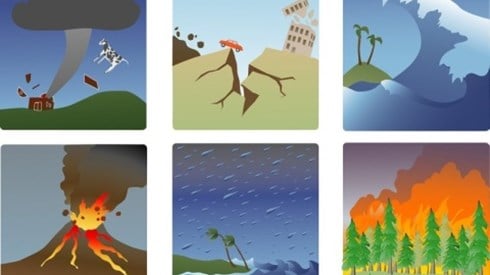Insured Catastrophe Losses $19 Billion First Half of 2019

August 16, 2019

Global economic losses from natural catastrophes and man-made disasters in the first half of 2019 totaled $44 billion, according to Swiss Re Institute's preliminary sigma estimates.
This figure is well below $109 billion, the average first-half economic losses of the previous 10 years. It is also lower than the losses of $51 billion reported for the same period a year earlier.
Of the total global economic losses in the first half of 2019, $19 billion were covered by insurance, the main driver being thunderstorms and flooding events in different parts of the world.
Of the $44 billion in total global economic losses, natural catastrophes accounted for the majority or $40 billion in the first half of 2019, compared with $45 billion in the year-earlier period. The remaining $4 billion of losses were caused by man-made disasters.
Global insured losses from natural catastrophes fell to $15 billion from $21 billion the year before, while insured losses from man-made disasters decreased to $4 billion from $5 billion.
Only about 42 percent of the global economic losses were insured (compared with 52 percent in the first half of 2018) as several large-scale disaster events, such as Cyclone Idai in southern Africa and Cyclone Fani in India, occurred in areas with low insurance penetration.
Cyclone Idai, which caused strong winds and severe flooding across Mozambique, Malawi, Zimbabwe, and Madagascar, was the deadliest natural catastrophe in the first half of this year. Economic losses from Cyclone Idai are estimated at least at $2 billion, of which only about 7 percent were insured.
Martin Bertogg, head of catastrophe perils at Swiss Re, said, "The experience of the first half of this year has once again exposed the existing protection gap issues in emerging countries. For example, Cyclone Idai showed just how fragile African coastal communities are, and, in India, Cyclone Fani inflicted widespread damage and large uninsured losses. Similarly, the nature and location of the events underline the theme of secondary perils taking a larger share of the overall loss burden."
Secondary Perils Were Primary Loss Drivers
Secondary perils such as thunderstorms, torrential rains, and snowmelt caused the highest losses through wind and water damage in the first half of 2019 in many regions of the world, including the United States, Canada, Europe, Australia, China, and Iran.
Swiss Re Institute's sigma estimates the total economic losses of these events at $32 billion. Approximately $13 billion of these losses were insured.
As in the first half of 2018, several parts of the world also experienced heat waves and dry weather conditions this year, with temperature records broken in several locations, particularly in Europe. The full impact of the extreme summer weather is yet to be determined.
Mr. Bertogg added, "Intense heat waves and dry spells of the like we've seen over the last few years are expected to become more frequent, exacerbating the conditions conducive to wildfires and agriculture losses. We also expect more variable rain patterns, as rising temperatures load the atmosphere with more vapor. Society will need to adapt and prepare for these increasing occurrences."
August 16, 2019

